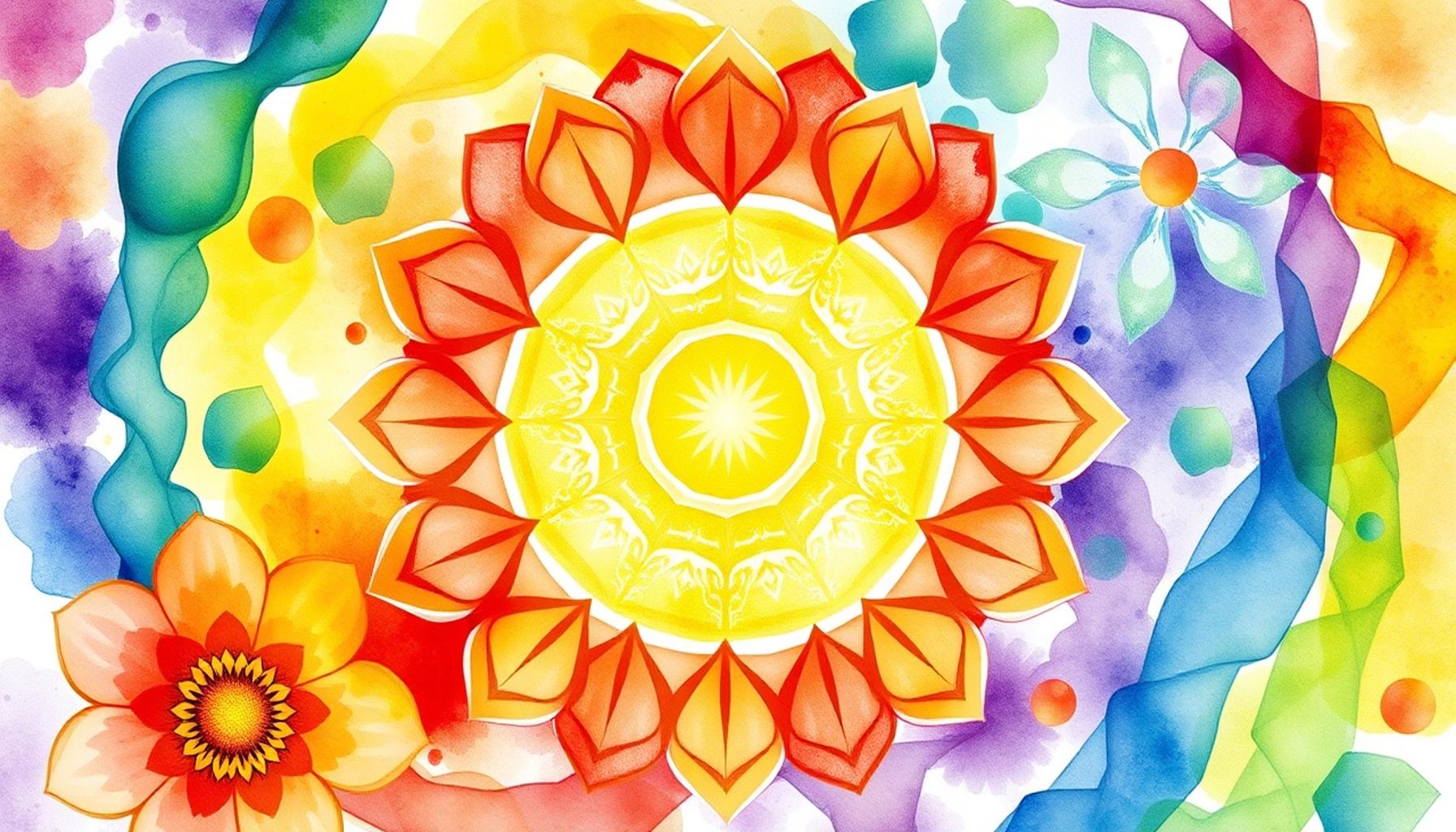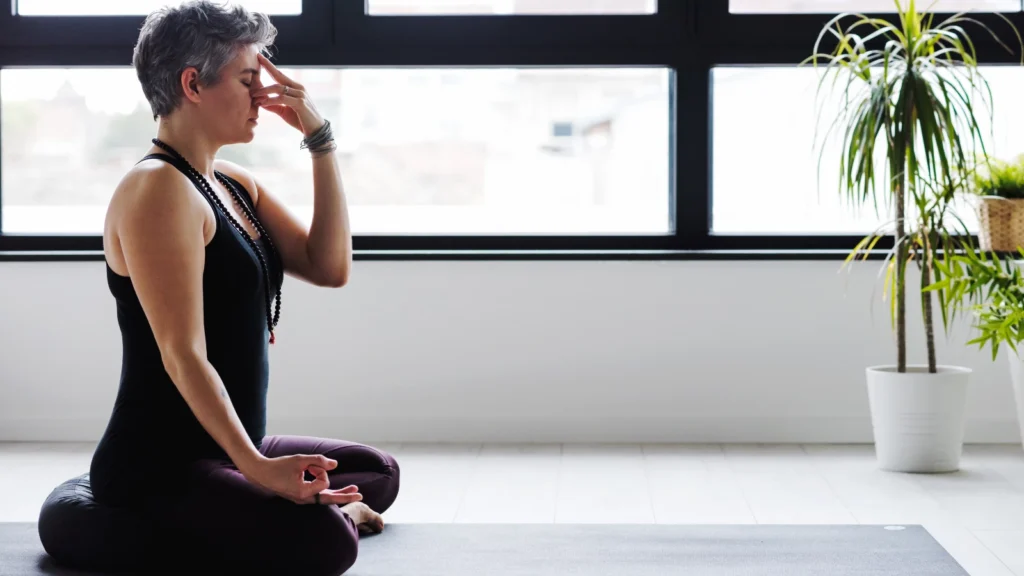Boost Mental Clarity with Breathing and Mindfulness Techniques

Harnessing the Benefits of Breath and Mindfulness
In our fast-paced world, maintaining mental clarity can often feel like an uphill battle. The clutter of daily distractions—whether it’s a never-ending stream of emails, social media notifications, or the overwhelming demands of modern life—can cloud our thoughts and hinder our focus. Fortunately, simple yet powerful techniques such as breathing exercises and mindfulness practices can help sharpen our mental acuity.
Breathing exercises are designed to promote relaxation and can easily be woven into our daily routines. For instance, the popular technique known as “4-7-8 breathing” encourages individuals to inhale for four seconds, hold the breath for seven seconds, and exhale slowly for eight seconds. This method not only helps reduce stress but also gives the mind a chance to reset and refocus. Incorporating such techniques can lead to improved focus throughout the day, enabling better concentration during tasks and reducing anxiety levels.
Mindfulness practices serve as another powerful tool in enhancing mental clarity. By cultivating a state of awareness and presence, individuals can learn to observe their thoughts without judgment. This practice, which can include meditation, mindful walking, or even eating, allows people to disengage from distractions and immerse themselves in the moment. An example of this can be seen in “body scan” meditations, where a person pays close attention to different parts of the body and how each feels. This not only aids relaxation but can also reveal areas of tension that might otherwise go unnoticed.
Implementing these strategies is far less complex than it may seem. With just a few moments each day—perhaps as part of a morning routine or during a mid-afternoon break—anyone can begin to transform their mental landscape. This article delves into the most effective breathing and mindfulness techniques to help you regain focus and boost mental clarity.

- Improved focus: Techniques can enhance concentration by training the mind to resist distractions, allowing for deeper engagement with tasks.
- Stress reduction: Mindful breathing calms the mind and body by activating the parasympathetic nervous system, promoting relaxation and reducing cortisol levels.
- Enhanced creativity: Clear thinking fosters innovative ideas and problem-solving, as a relaxed mind is more open to exploring new concepts.
Whether in the bustling cities or quieter suburbs, the ability to harness breath and mindfulness can truly optimize personal and professional lives. Exploring these practices further can lead to a more centered existence, filled with clarity and intention.
CHECK OUT: Click here to explore more
Techniques to Elevate Your Mental Clarity
To effectively boost mental clarity, it is essential to understand how specific breathing techniques and mindfulness practices can enhance cognitive function. Begin by incorporating focused breathing into your daily routine. For instance, “Diaphragmatic breathing” or “abdominal breathing” allows for a more profound inhalation, which increases oxygen supply to the brain. By focusing on the diaphragm instead of shallow chest breathing, individuals can alleviate tension, promote relaxation, and ultimately improve their mental sharpness. Regular practice can lead to a greater sense of control and improve overall well-being.
Another potent technique is “box breathing,” favored by athletes and military personnel alike for its ability to enhance focus and calm nerves. This method consists of four basic steps: inhale for four counts, hold for four counts, exhale for four counts, and once again hold for four counts. This systematic approach not only steadies the mind but also enhances one’s ability to concentrate on important tasks. By regulating the breath in a controlled manner, one can create a sense of equilibrium that is vital for maintaining mental clarity.
The Role of Mindfulness in Mental Clarity
In addition to tailored breathing practices, the incorporation of mindfulness into daily life has a transformative effect on clarity of mind. Mindfulness is about being fully present and engaged with the moment, minimizing distractions, and preventing the mind from wandering. Studies have shown that regular mindfulness practice can lead to significant improvements in attention span, decision-making, and emotional regulation.
A simple exercise to cultivate mindfulness is the “5-4-3-2-1” grounding technique. This approach prompts you to identify:
- Five things you can see: Observing details in your environment helps you anchor to the present.
- Four things you can touch: Engaging with various textures and sensations can promote bodily awareness.
- Three things you can hear: This encourages active listening and appreciation for ambient sounds.
- Two things you can smell: Pinpointing scents—even if it means thinking back to past experiences—can refocus your thoughts.
- One thing you can taste: This invites attention towards sensations in the mouth, allowing for deep sensory engagement.
Engaging with this exercise even for a few minutes can create a mental oasis amid a chaotic day, enhancing clarity of thought and emotional balance. Integrating these breathing techniques and mindfulness strategies into your life does not require a significant time commitment. Even small doses can yield noticeable results, helping you carve out a clear mental pathway regardless of the surrounding turmoil.
Ready to experience heightened mental clarity and reduced stress? Continue exploring these practical, straightforward methods to discover how breathing and mindfulness can revitalize your cognitive abilities and improve your overall quality of life.
| Technique | Advantages |
|---|---|
| Deep Breathing | Promotes relaxation, reduces stress, and enhances focus. |
| Mindful Meditation | Improves attention span, increases self-awareness, and fosters emotional clarity. |
| Guided Visualization | Helps in achieving mental clarity, reduces anxiety, and enhances creativity. |
| Progressive Muscle Relaxation | Releases physical tension, leading to improved mental focus. |
Engaging in breathing techniques can significantly enhance your mental clarity. By integrating practices like deep breathing and mindful meditation, individuals can experience a profound shift in their cognitive capabilities. These techniques have shown that they can help in reducing stress levels, allowing for a more coherent thought process and improved decision-making abilities.Moreover, incorporating visualizations into your routine stimulates the brain to align with your goals, fostering a sense of purpose and focus. When your mind is not cluttered with anxiety or tension, you are more in tune with your thoughts, leading to better productivity. The benefits of such techniques extend beyond mere clarity; they promote overall well-being, making them essential tools in today’s fast-paced life. As you delve deeper into these practices, you will find a treasure trove of information that can further enhance your journey towards mental clarity and emotional stability.
CHECK OUT: Click here to explore more
Enhancing Focus through Meditation and Visualization
In addition to breathing techniques and mindfulness exercises, integrating meditation and visualization practices into your daily routine can substantially amplify mental clarity. Meditation serves as a powerful tool for clearing the mind, aiding individuals in reaching a state of deep relaxation, which can considerably improve cognitive function. Among the various types of meditation, “mindfulness meditation” encourages practitioners to observe their thoughts non-judgmentally. This forms a crucial practice for gaining insight into one’s mental processes, ultimately leading to heightened awareness and focus.
Neuroscience research supports the mental clarity benefits of meditation, showing that regular practitioners exhibit increased gray matter density in the prefrontal cortex, a region of the brain responsible for decision-making and emotional regulation. An easy way to begin your meditation journey is to commit to just five to ten minutes each day, finding a quiet space where you can sit or lie comfortably. Allow thoughts to come and go while directing your focus back to your breath whenever distractions arise. As your practice deepens, you may find your attention span extending and your mental clutter diminishing.
The Power of Visualization Techniques
Coupled with meditation, employing visualization techniques can further solidify mental clarity. Visualization involves creating vivid mental images to enhance focus and achieve specific goals. Athletes often utilize these techniques, imagining themselves executing a perfect routine to boost performance. However, visualization isn’t just for athletes; anyone can utilize these practices to enhance mental clarity and creativity.
To practice visualization, find a comfortable seating position and close your eyes. Take several slow, deep breaths to center yourself. Imagine a scenario where you’re able to think clearly and make decisions effortlessly. Picture every detail: the environment, your feelings, and your enhanced focus. Engage all your senses, creating a dynamic mental movie. By consistently practicing visualization, you can train your mind to create a clearer picture of your goals and how to achieve them.
Gratitude Practices to Clear the Mind
Another method to enhance mental clarity is through the practice of gratitude. Regularly reflecting on what you are thankful for can shift your mindset away from clutter and negativity. Consider starting or ending your day with a gratitude journal, where you list three to five things you appreciate. This not only fosters a positive outlook but also reduces anxiety, leading to improved focus. Research by psychologists shows that gratitude can enhance brain function, allowing for clearer thinking and better problem-solving abilities.
Additionally, pairing gratitude with mindfulness can yield transformational outcomes. As you note what you are grateful for, pause to fully embrace the emotional response associated with those thoughts, creating a deeper connection that can help anchor you in the present moment. This amplifies your overall sense of mental clarity and peace.
By blending breathing techniques, mindfulness exercises, meditation, visualization, and gratitude practices, you can create a comprehensive approach to boosting mental clarity. Consistent engagement with these techniques can forge a path to a more focused and balanced mind. As you explore these enriching practices, you may discover new insights about your cognitive abilities, ultimately enhancing your quality of life and productivity.
SEE ALSO: Click here to read another article
Conclusion
In our fast-paced, constantly connected world, achieving and maintaining mental clarity is more important than ever. This article explored an array of breathing and mindfulness techniques, including meditation, visualization, and gratitude practices, that collectively serve as valuable tools for enhancing focus and mental well-being. By incorporating these techniques into your daily routine, you can create a balanced mental state that not only promotes clarity but also fosters emotional resilience.
Research has shown that engaging in practices like mindfulness meditation can result in structural changes in the brain, enhancing areas responsible for decision-making and emotional regulation. Similarly, visualization techniques are accessible to anyone, enabling you to manifest your goals visually and mentally. When combined with a consistent gratitude practice, these methods can shift your perspective away from negativity, providing both clarity and a profound connection to the present moment.
As you embark on this journey toward improved mental clarity, consider starting small. Dedicate just a few minutes each day to these practices and gradually build upon them. The cumulative effect can be transformative, allowing you to tap into a clearer, more focused mindset. By prioritizing your mental clarity, you not only enhance your productivity but also significantly improve your overall quality of life. This holistic approach to mental fitness invites you to explore deeper reflections about your thoughts and emotions, ultimately leading to a more enriching and fulfilling existence.
Related posts:
Why Consistency Beats Perfection in Mental Growth
How to Train Your Brain to Embrace Daily Challenges Effectively
Build Personal Confidence Daily Small Steps for Big Impact
Simple Daily Habits Transform Mindset Boost Self-Confidence
Weekly Plan Boost Your Mindset Practically and Effectively
The Impact of Nighttime Habits on Mental Strength and Focus

Linda Carter is a writer and growth mindset specialist with expertise in cognitive development and resilience training. With extensive experience helping individuals transform limiting beliefs and unlock their potential, she shares practical mindset strategies on our platform. Her goal is to empower readers with science-backed techniques to cultivate adaptability, embrace challenges, and achieve continuous personal and professional growth.